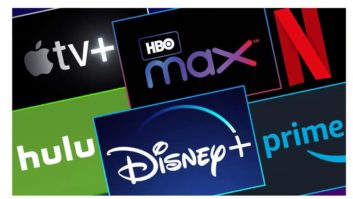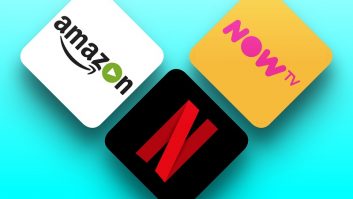
Advertising video on demand (AVoD) in the UK is continuing to grow rapidly – in fact, it’s predicted that revenue will more than double through 2020. The key to this growth, however, is securing consumer engagement across both desktop and mobile devices, and in order to achieve this the clinching factor is video quality.
But what does quality actually mean in the world of AVoD, and how can those in the industry go about guaranteeing it?
Defining ‘good quality’
The first thing people typically think of when they talk about video quality is the sharpness of the visual – with the golden standard of course being 4K viewing. That said, if I were to show you an image comparing a current visual in 480p and 4K I bet you’d be surprised by how little difference you would actually see. This is because bitrate currently hinders both the offering from the service provider and the viewing experience from the consumer.
4K streaming has not been widely adopted for a variety of reasons, but the number one reason is simply that the weight of the content being streamed is too heavy, which results in everyone’s favourite pet peeves – buffering, jerky content, the spinning wheel of death, etc.
If not visual quality, what else contributes to a good AVoD experience?
Firstly, player-loading. Audience data supports the fact that start-up delays and buffering have a direct impact on abandonment rate – in short, the longer content takes to load, or the more frequently content buffers mid-stream, the more viewers switch off.
Commonly viewed content such as news channels can experience up to 25 per cent of viewers leaving the site if they are waiting for more than five seconds for content to buffer. It’s something even big players like Netflix struggle with – so much so in fact, that while they’re trying to solve the issue they’ve figured out a way to monetise the loading screen with ads as viewers are forced to wait for their content.
Content transitions are also a key part of the AVoD experience. Moving from programme to ad and back again is all too often a jarring experience for viewers thanks to delayed delivery and poor quality ads – something the majority of consumers are now demanding to be resolved. Deliver a seamless, TV-like experience – where the content and ads flow as one, without buffering or inconsistencies – and you’ll have cracked a core part of the AVoD experience.
The issue of scaling for growth
With the AVoD market showing no signs of slowing down, scaling challenges will be one of the next big things to hamper delivering a high quality experience.
The industry knows only too well the dangers of not scaling up solutions to match the constantly evolving formats and content types that come its way. In past years, for example, we’ve seen a number of proprietary streaming formats including RTMP and RSP decline in usage as a result of failing to keep pace with demand.
All is not lost however, as at the same time new streaming formats such as HLS and DASH – based on open protocols including HTTP – have emerged to help with the issue of scale. Helped through initiatives such as the Streaming Video Alliance, this is a trend we expect to continue– and while recent MPEGLA announcements might have put DASH’s future (in particular) in doubt, the decline of some of these newer formats may in fact help simplify the streaming landscape further.
Over in a flash
The decline of Flash is also a key milestone in the delivery of quality AVoD at scale. Whilst it’s not dead quite yet, it’s eventual abandonment is inevitable as web browsers continue to adopt open DRM standards, finally allowing premium content to be delivered outside of the Flash ecosystem.
Open standards is a key message. The entire video technology stack is heading in this direction, so making sure those in the industry adopt open technology stacks, and avoid plug-ins and proprietary formats is vital to moving video experiences forward at the back end.
Battling the ad blockers
The final component in a better quality ad experience is Cloud delivery.
Ad blocking technology is currently having a very real impact on the media industry, and AVOD revenues in particular. In 2015, Pagefair estimated that 21% of UK viewers were using an ad blocker, and we believe that number has grown even further in 2016– indeed our own research from last year showed that over half (51%) of UK consumers had downloaded, used or were using an ad blocker, and a further quarter (23%) were contemplating it.
By utilising the Cloud and shifting from client-side to server-side ad insertion (SSAI) publishers can not only avoid the ad-blockers (ensuring a fully functioning AVOD service) but improve the experience for the end viewer – delivering one seamless, consistent quality, TV-like stream, normalising ads through the transcode process. That’s what I’d call a win-win.
Our approach to a quality AVOD experience
Looking forward we believe that consumers absolutely have the right to avoid broken, annoying and intrusive ad experiences but, at the same time, companies have the right to monetise and promote the content they put a lot of money into producing.
Quality is the key to marrying the two – finding a way to improve the user experience so they are more willing to accept ad content. Delivering such an AVOD service that works for both publisher and consumer boils down to two key things:
1. Investing in a fast loading player that streams seamlessly to minimise audience abandonment and improve engagement
2. Pushing all ad decisioning to the server via a SSAI solution that stitches everything together in the Cloud to fully mitigate ad blockers and allows for the adjustment of the manifest and content for all device types
It’s a model that will lift the quality of the experience, drive engagement and insights and – more importantly, increase revenue. We are already seeing many of our clients reaping such rewards – proving that it’s not necessarily bitrate, but experience that matters, it always has.
By Mark Blair, VP of EMEA, Brightcove







